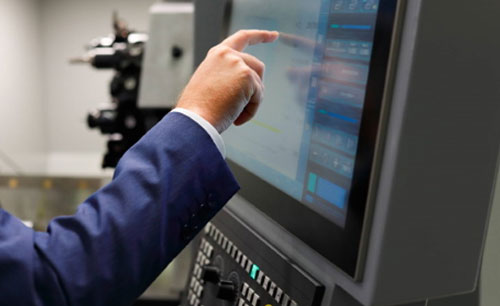What HMI trends lay in the future of industrial automation and manufacturing? From artificial vision to the operator’s role, here’s what the industry experts say.
1. Artificial vision
Increasing competition and the need to contain costs are forcing companies to achieve zero-defect production. This requires a more reliable and accurate quality control system, which guarantees the compliance of each piece. Including the integration of innovative technologies such as artificial vision, which will enable HMI devices to automatically perform control, measurement and classification functions.
2. Wearable HMIs
The human-machine interface of the future will get even more interactive. The growing popularity of wearable devices in the consumer market (IDC estimates an average growth of over 20% per year) will also be reflected in the manufacturing sector. This is also due to the National Industry 4.0 Plan, which mentions arable devices among the technologies subject to hyper-depreciation. For example, operators will likely wear bracelets that alert them of alarms with a specific code so that they can intervene in a timely manner.
3. Natural language processing
Natural Language Processing (NLP) technology is a hot topic in the industry, especially in relation to user interfaces. The language processing process makes it possible for the operators and systems to interact using verbal language. This opens the door to highly interesting applications, making production more immediate and efficient.
4. Blind HMI
Among the future HMI trends, human-machine interfaces might become blind devices inside the panel. In this case, operators will interact with the machine and display the production pages directly on their tablet. Alternatively, the display can be host inside the machine, while the operation will take place via an input device. For example, a tablet with a dedicated app.
5. More efficiency
Production efficiency is one of Industry 4.0 priorities and this will affect the evolution of HMIs. Companies need technological solutions that simplify the interaction between men and machines to increase productivity and cut resources and time waste. One of the key factors to improve efficiency is device flexibility. Hence, it’s important that HMIs will be highly customizable according to each company’s needs.
Talking of configurability and efficiency, discover ERGO, our new concept of human-machine interface.

